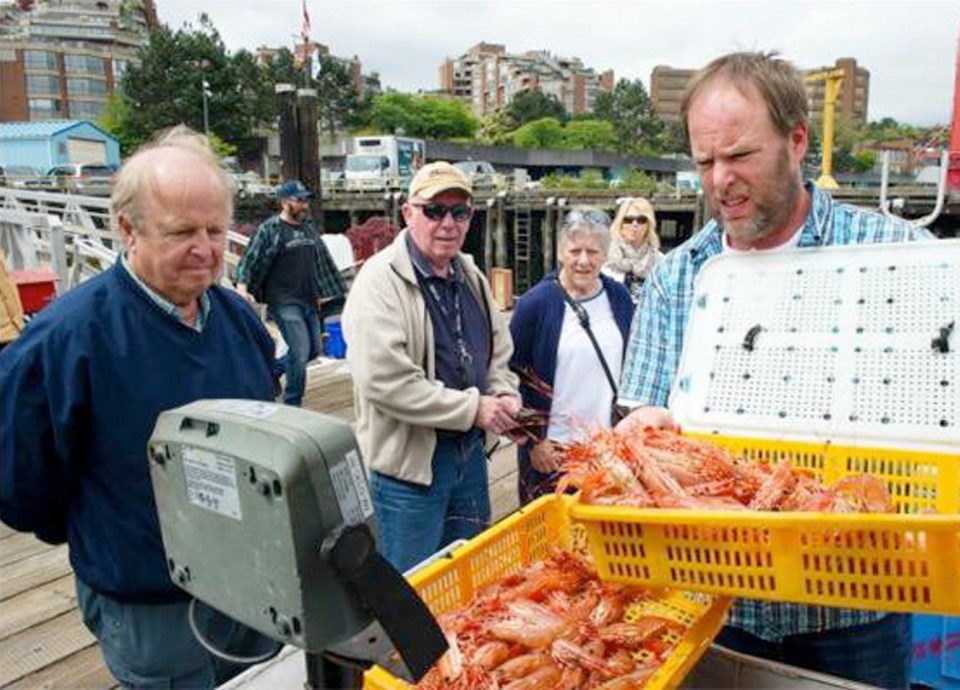Day breaks over the waters of Howe Sound as Stewart McDonald steers his 40-foot fishing boat, the Lormax, towards a fishing buoy bobbing lazily in the pale light.
It’s the first full day of B.C.’s spot prawn season and McDonald, 47, is eager to gauge what his first line of traps, lying deep below on the ocean floor, might hold.
B.C. spot prawns are an international delicacy that fetch a pretty price. And while spot prawn fishermen tend to be reticent when questioned about daily hauls and preferred fishing locations, the basic math behind it all suggests a tidy profit is up for grabs. This year, the prawns are expected to fetch $17 to $18 a pound.
“We have the best prawns in the world here,” said McDonald from the helm of the Lormax. “That’s why they are so expensive.”
And it’s also why the competition among local fishermen is so fierce. There are only 250 prawn fishing licences in B.C. and only so much space. McDonald, who has been fishing since he was about six years old, said that while most fishermen abide by a gentleman’s code, there are a few who follow different rules.
“I sure try to avoid it, but there are people who will try to mess with your gear — strange stuff happens,” he said with a smile. “There is a lot pressure. The prawn season is short and the equipment and costs are high. So the pressure is high.”
Long exported to Asian markets, in particular Japan, it is only within the last 10 years or so that B.C. spot prawns have developed a local market, McDonald said.
Part of this, no doubt, has been helped by the annual Vancouver Spot Prawn Festival, which is taking place this weekend. The industry now grosses an estimated $40 million to $45 million a year.
McDonald explained that much of his catch will go to a local buyer for entry into the live market, while a portion will be bought directly off the boat by customers when he docks.
Other boats, he said, freeze and box their product for direct export, while others still sell directly to restaurants.
And while the competition is stiff and there are a lot of boats vying for the same goal, Steven Richards, executive director of the Pacific Prawn Fisherman’s Association, said the spot prawn fishery is sustainable and well-managed.
“The PPFA spends a great teal of money on science and enforcement — both in season and post season,” Richards said, noting each boat is restricted to a specific number of traps. There is also regular stock testing done, he said, to ensure the prawn population remains healthy and viable.
Back out in the waters of Howe Sound, McDonald is pulling in the last of his six lines of traps. It’s been a long, nine-hour day that began at 5 a.m. Once unclipped from the main line, the contents of the traps are emptied on to a metal table, collected into perforated plastic crates, and then stored in compartments filled with saltwater. Hitchhikers such as crabs and fish are tossed back in. Undersized prawns and female prawns with eggs also go back into the ocean.
His storage compartments filled, McDonald, steers the Lormax back toward Fishermen’s Wharf in False Creek. So how was the day’s haul?
“Terrific,” he said. “Even if I got half of that much it would have been terrific.”



